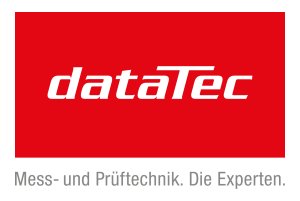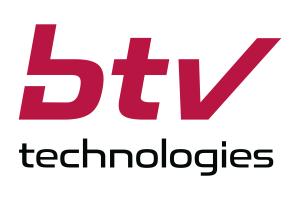Ambarella
New NHTSA law in the USA demands answers
From 2029, all new cars and light commercial vehicles in the USA must be equipped with automatic emergency braking (AEB). Paul Dentel, Staff Product Manager, Radar Systems at Ambarella, is convinced that this will pose problems for OEMs, but that there is already a solution to these problems.
Markt & Technik: NHTSA is making advanced emergency braking mandatory in the USA...
Paul Dentel: Yes, in my view it's a bold move by the regulatory authorities in Washington to protect the public - but it makes perfect sense. I live in Texas, where everyone drives a heavy pickup truck. I used to be an avid cyclist and was once hit by a car. And I'm really glad it was a small SUV as I rolled across the hood and off the roof of the vehicle. If this was a big pickup, I wouldn’t be alive as I would have gotten run over.
I think NHTSA understands that Americans like to buy bigger vehicles. The only problem with this is that it ultimately leads to more deaths because the hoods are getting higher every year. Accordingly, the NHTSA requirement is the right thing to do, but it is also a major challenge for car manufacturers. There are certainly OEMs in America who claim that it is not possible to fulfil these requirements. I, on the other hand, am convinced that it is possible; but the OEMs must invest in the development of technologies.
What does that mean?
I think that OEMs need to invest in more powerful perception to ensure that their AEB systems work in a wide range of tests. This means that it will no longer work if an OEM simply buys the cheapest, most cost-effective sensor on the market.
In Europe, there is the NCAP star rating, which means that if an OEM wants to do well there, it must implement appropriate driver assistance systems in its vehicle. But this is not a must - and that is a big difference. With the new NHTSA legislation, all vehicles in the USA that come onto the road as new cars from September 2029 must have an enhanced AEB system, and that AEB system must also include a collision warning system. The new standard stipulates that all vehicles must be able to stop and avoid contact with a vehicle in front at speeds of up to 62 miles per hour, and that the systems must recognize pedestrians in both daylight and darkness. In addition, this standard requires the system to brake automatically, up to a speed of 90 miles per hour, if a collision with a vehicle in front is imminent; and up to 45 miles per hour if a pedestrian is detected.
In the EU, too, an AEB system has been required for the registration of new cars and light commercial vehicles since July 2024, but the requirements are not as high as in the USA, because here we are talking about a collision warning system. But the technologies you mentioned are not new, so what's the problem?
The regulation applies to every vehicle, which makes the costs a problem, especially for more cost-focused vehicles. Let's look at it from the perspective of an OEM. They have several options for realizing an AEB system. In my opinion, the easiest way to solve the problem is with a high-performance radar sensor, whose data is processed centrally, and a monocular camera system.
NHTSA has estimated the costs for OEMs to fulfil the AEB requirements. What is strange is that only the software costs were taken into account for 95% of vehicles. Of course, you can put new software on a system, but at the end of the day, it's the combination of software and hardware working together that determines performance. A 1990 computer will only ever perform like a 1990 computer. I think these calculations are based on companies like Tesla, who have a very, very large central processing unit in their vehicles, which is usually capable of processing a lot of data. That means it's not currently possible for other manufacturers with smaller processors in their vehicles to do that.

Modern vehicles from other OEMs should also have the computing power to process large amounts of data...
Yes, but that's not the point, because the implementation of the regulation is both a hardware and a software issue. If the perception data processing were to take place exclusively in the center of the vehicle, a software-only approach would be possible. But in 99.9 percent of the radar systems on the market today, processing takes place at the edge. All these radar systems process their data in the bumper of the vehicle. These systems are extremely cost-effective, but they are also inefficient. In my opinion, it is absolutely impossible to upgrade these systems so that they can fulfil the NHTSA requirements in the future; especially for the more challenging scenarios specified in the regulation.
The challenging scenarios are the problem. Can a basic radar do AEB at 90MPH? Yes. Can a basic radar do AEB at 45MPH when a pedestrian is changing their left tire next to 2 guardrails? No.
Let's say we're driving on the freeway and the vehicle needs to be able to detect obstacles far in the distance. A typical L2+ vehicle has five radar sensors and a mono camera. On the freeway, the two front corner radars are underutilized because the focus is on the forward-facing radar and blind spot monitoring to ensure you can change lanes safely. Why not utilize the processing capacities of the two front-corner radar sensors, so that the forward-facing radar can be used to sense farther away?
And one thing is clear: it's heading in that direction, especially in the Asian markets.
And who takes care of this redistribution of resources?
The OEMs themselves have to decide this; they have to decide which software they want to control—especially when it comes to route planning, vehicle dynamics and triggering the AEB system. Because, clearly, a driver of a Mercedes-Benz vehicle expects a different experience than a driver of a small car.
In Germany and Europe there has even been discussion about the underlying operating systems, I would say that many OEMs are having a hard time deciding which software is really crucial...
But I would say that more and more OEMs have realized that the issue is not as simple as they first thought and are starting to rethink. Of course, the question of which software is really decisive; for your own branding, this is an important issue. That's why we're taking a grey box approach, which means we're open to OEMs using our technology to create a customized experience for their customers.
But to be very clear: if a radar is used by one supplier, a camera by another supplier and the software by a third supplier, and it all has to be integrated into a low-latency system, it becomes really difficult.
In my view, the regulatory requirements in the US are forcing OEMs to rethink things, because they have to implement an advanced AEB system not just in their high-end vehicles, but in all vehicles, which means they have to realize these requirements in a cost-effective way. And it's not that easy; I would say it's impossible with the software and hardware equipped on cost-focused vehicles today.
Take a look at 3D radar systems as forward-facing radars, which most vehicles are equipped with today. You get information about azimuth, range and the speed of the target. But these radar systems lack the sensitivity and elevation information to detect what is happening in the environment to fulfill this regulation. Just one example: according to the NHTSA regulation, a radar system should be able to classify a pedestrian with high confidence. A 3D radar cannot do this. Now you could say: sensor fusion helps, so the installed monocular cameras can be used to classify this pedestrian. The problem is that this system also has to work at night.
An infrared camera could help here...
Yes, of course. However, as far as I know, there are only a few OEM/Tier-Ones that use infrared cameras, because nobody wants to pay for them. All additional costs are undesirable. It is much easier to use a sensor that is already in the vehicle, for greater functionality, than to put a new sensor in the vehicle.
As I said before, I think the best solution currently on the market is to combine a forward-facing satellite radar sensor with a monocular camera and feed the data to a central processing unit, ideally the CV3-AD SoCs from Ambarella. This means that a low-cost radar sensor can also be used, as it does not have to perform any calculations. The fusion of the sensor data then takes place in the central unit. I also believe that a thermal camera can be utilized in combination with a satellite radar to address the regulation in the same manner.
Why should an OEM choose Ambarella?
Ambarella offers clear advantages. Our centralized radar architecture requires far fewer antennas, thanks to our Oculii AI radar algorithms, which have the unique ability to adapt radar waveforms to the environment. On the one hand, this generates significantly less data, while at the same time providing superior angular resolution and the sensitivity of the radar system. And, thanks to that smaller amount of data, the bandwidth required for centralized processing of the raw data is also reduced. If more antennas are used, the generated data cannot be transported through the vehicle. I, therefore, believe that our approach will also make it possible to equip small vehicles, which are cost-sensitive, with an extended AEB system in the future.
Ambarella offers software and hardware. Is the software optimized for Ambarella's hardware, or can a developer use Ambarella chips with their own software, for example?
Ambarella's radar software provides the information the OEM needs. Some OEMs want objects; others may want a point cloud, similar to a LiDAR system. We can provide both. But for this regulation, I would recommend considering the point cloud as it is very detailed and contains more information than any other solution on the market. From there, we help the OEM to realize this system architecture in their vehicles.
And that's just for the radar system. We also have the Ambarella software stack for autonomous driving, which incorporates our advanced computer vision technology, along with our Oculii radar technology and sensor fusion. OEMs can use this software or develop their own. Our flexible approach makes it easier for the OEM to use the parts they need.
So, we are open to everything and don't force any customer in a certain direction. However, we would recommend using a combination of hardware and optimized software for the best overall perception solution. This allows optimized, more energy-efficient and more powerful systems to be implemented. I think it would be very difficult for OEMs to replicate this centralized radar system without an Ambarella CV3-AD SoC and the associated software.
Can Ambarella provide data to prove that the combination is better than other approaches on the market?
We take a different approach: We typically invite interested customers to our Parma automotive R&D facility in Italy. There, we put them in one of our autonomous R&D vehicles and demonstrate the performance of our approach. After a drive, we show the utilization of our chips and how we use the technology to detect a pedestrian 200 meters away, for example. We believe that our approach is very different from others on the market who only refer to specifications from data sheets. We prefer to talk about automotive perception use cases.
The interview was conducted by Iris Stroh





